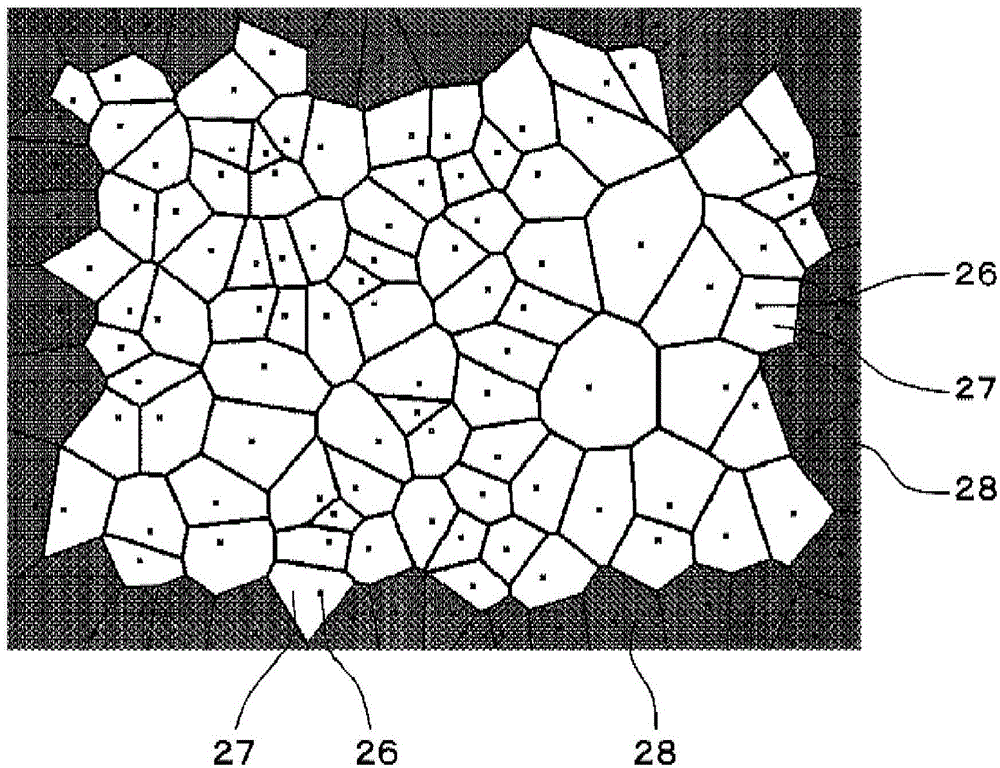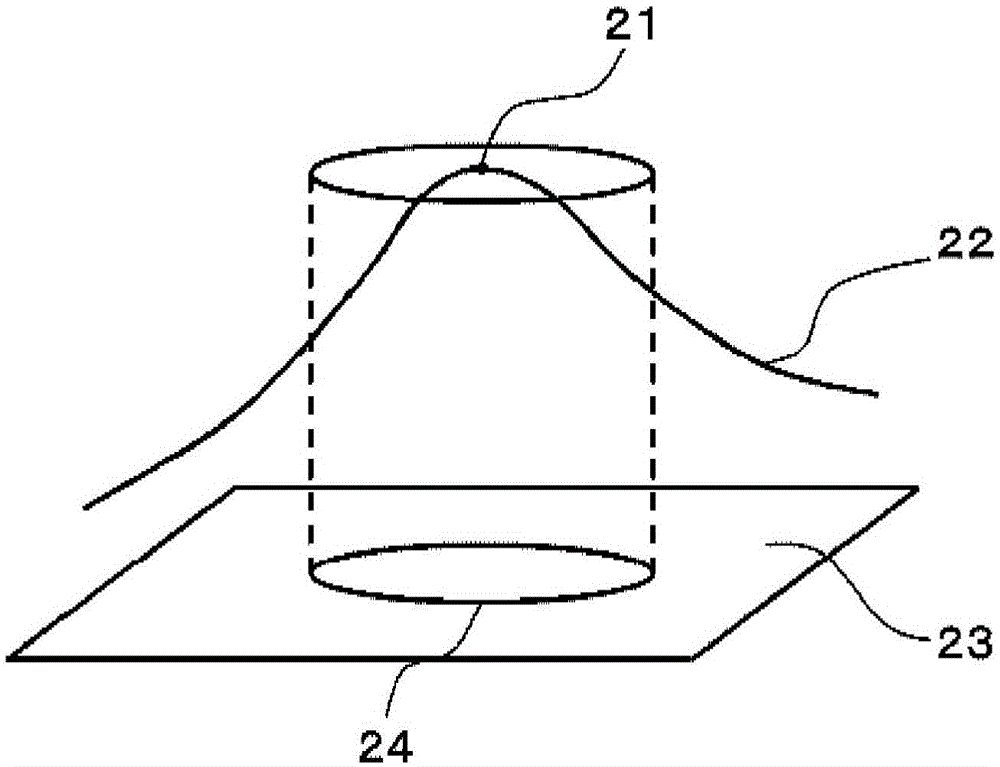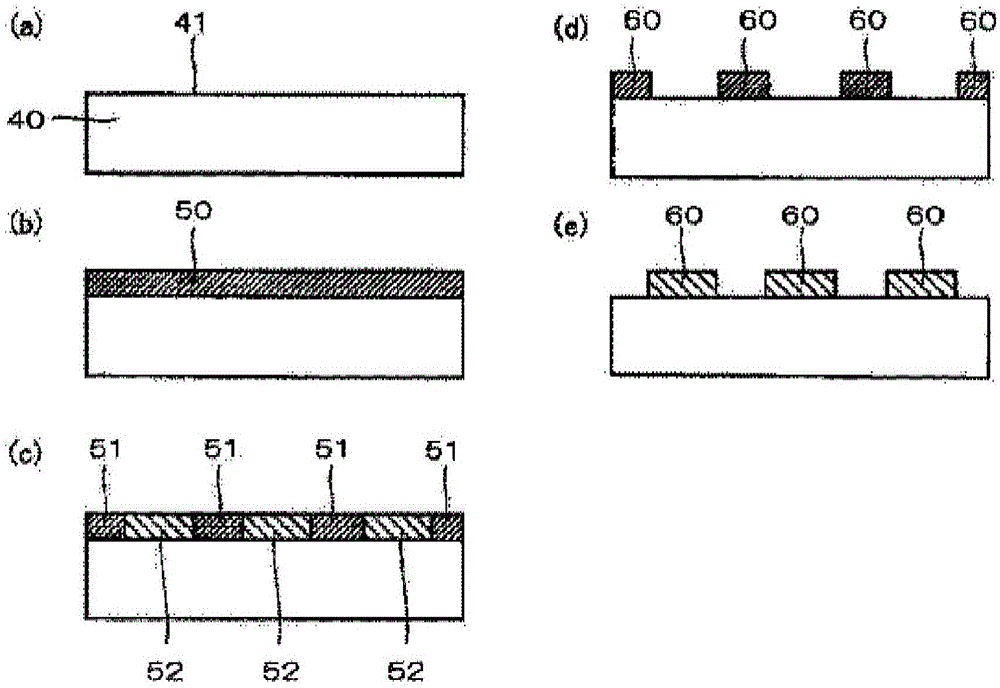Anti-glare film
An anti-glare film and anti-glare layer technology, applied in optics, instruments, optical components, etc., can solve problems such as the reduction of anti-glare properties, and achieve the effect of suppressing whitening and dazzling
- Summary
- Abstract
- Description
- Claims
- Application Information
AI Technical Summary
Problems solved by technology
Method used
Image
Examples
Embodiment 1
[0220] (Preparation of molds for anti-glare film production)
[0221] The material which gave the ballard copper plating to the surface of the aluminum roll (A6063 based on JIS) of diameter 300mm was prepared. Ballard copper plating consists of copper plating / thin silver plating / surface copper plating, with a total thickness of approximately 200μm. The copper-plated surface is mirror-polished, and a photosensitive resin is applied to the polished copper-plated surface and dried to form a photosensitive resin film. Then, repeat the array Figure 9 The pattern obtained by the pattern shown in was exposed and developed with laser light on the photosensitive resin film. Exposure and development by laser light were performed using Laser Stream FX [manufactured by Think Laboratory]. A positive type resin is used as the photosensitive resin. Figure 9 The pattern shown in is a pattern made by passing a plurality of Gaussian function-type band-pass filters from a pattern wit...
Embodiment 2
[0231] In addition to repeating the Figure 10 A mold was produced in the same manner as the production of the mold in Example 1, except that the pattern obtained by the pattern shown in was exposed on the photosensitive resin film with a laser. An anti-glare film was produced by the same method as the production of the anti-glare film of Example 1 except using this mold. Let the obtained antiglare film be antiglare film B. Figure 10 The pattern shown in is a pattern made by passing a plurality of Gaussian function-type band-pass filters from a pattern with a random brightness distribution. The aperture ratio is 50%. Calculated from the one-dimensional power spectrum of the pattern average frequency of and standard deviation σ f 0.091μm respectively -1 and 0.106μm -1 .
Embodiment 3
[0233] In addition to repeating the Figure 11 A mold was produced in the same manner as the production of the mold in Example 1, except that the pattern obtained by the pattern shown in was exposed on the photosensitive resin film with a laser. An anti-glare film was produced by the same method as the production of the anti-glare film of Example 1 except using this mold. Let the obtained antiglare film be antiglare film C. Figure 11 The pattern shown in is a pattern with a random brightness distribution, which is made into a pattern of 0 by passing it through a plurality of Gaussian function-type bandpass filters. The aperture ratio is 40%. According to the one-dimensional power spectrum of the pattern Calculated average frequency and standard deviation σ f 0.092μm respectively -1 and 0.109μm -1 .
PUM
| Property | Measurement | Unit |
|---|---|---|
| thickness | aaaaa | aaaaa |
| thickness | aaaaa | aaaaa |
| thickness | aaaaa | aaaaa |
Abstract
Description
Claims
Application Information
 Login to View More
Login to View More - R&D
- Intellectual Property
- Life Sciences
- Materials
- Tech Scout
- Unparalleled Data Quality
- Higher Quality Content
- 60% Fewer Hallucinations
Browse by: Latest US Patents, China's latest patents, Technical Efficacy Thesaurus, Application Domain, Technology Topic, Popular Technical Reports.
© 2025 PatSnap. All rights reserved.Legal|Privacy policy|Modern Slavery Act Transparency Statement|Sitemap|About US| Contact US: help@patsnap.com



